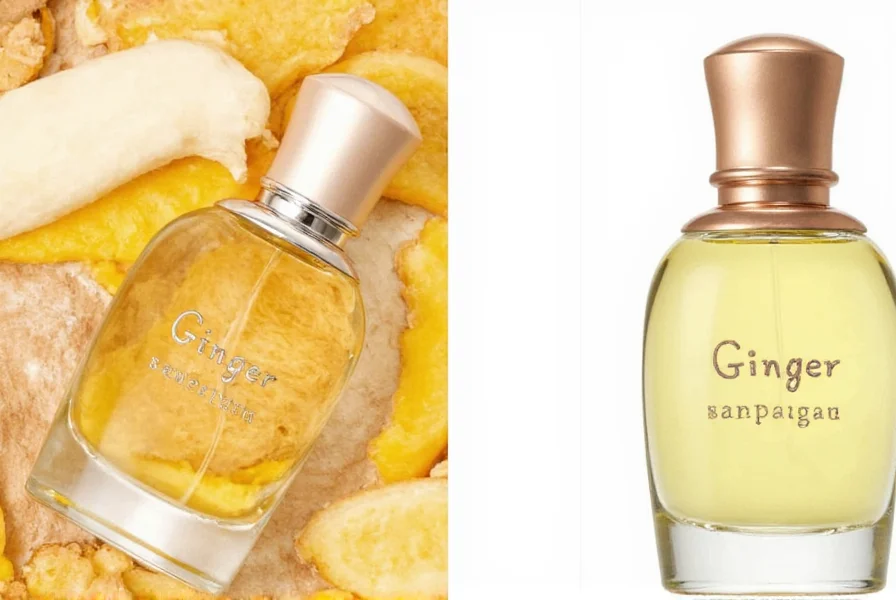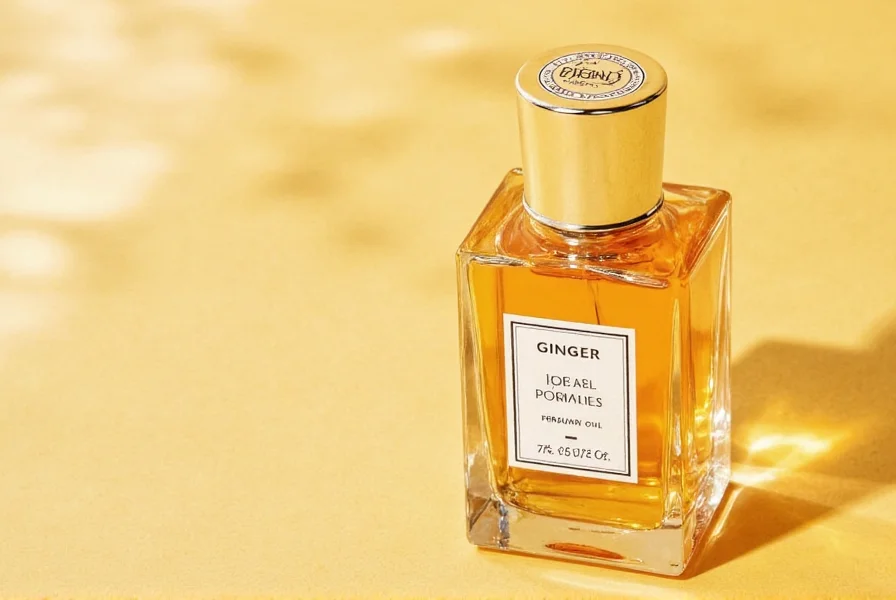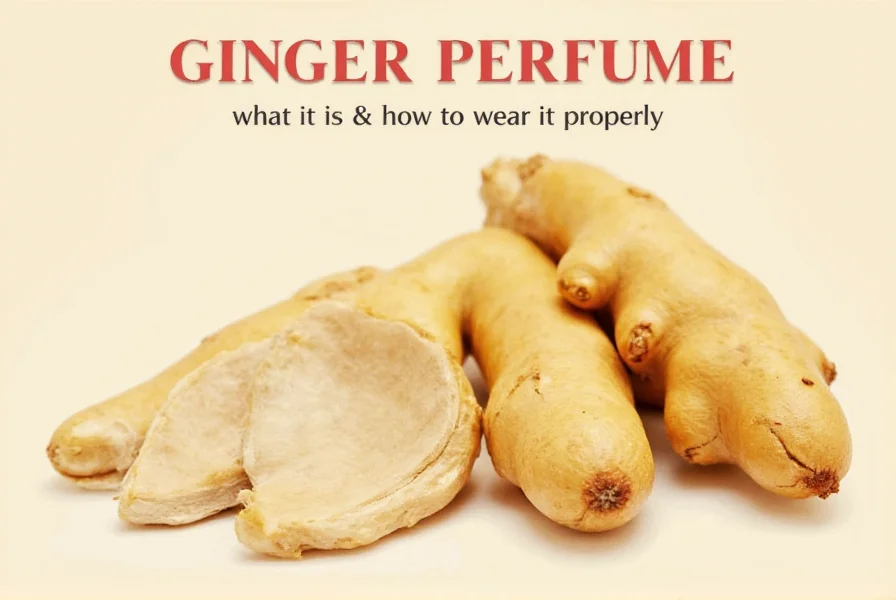Ginger's journey from culinary staple to perfume ingredient spans centuries, yet its application in modern perfumery reveals surprising sophistication. This versatile note functions as both a top and heart note, offering immediate vibrancy while maintaining presence throughout a fragrance's development. The best ginger perfumes avoid one-dimensional spiciness, instead showcasing the root's nuanced character through careful extraction methods and thoughtful blending.
The Botanical Essence of Ginger in Fragrance
True ginger perfume begins with Zingiber officinale, the ginger plant's rhizome. Perfumers primarily use two extraction methods: steam distillation yields a brighter, more citrus-forward oil, while CO2 extraction preserves deeper, earthier qualities. The resulting essence contains zingiberene (providing warmth), beta-bisabolene (adding floral hints), and gingerol (delivering signature spice).
Unlike synthetic alternatives that emphasize only the spicy aspect, natural ginger extracts create multidimensional experiences. High-quality ginger perfumes balance three key elements:
| Ginger Perfume Component | Sensory Characteristics | Perfume Function |
|---|---|---|
| Top Note Ginger | Sharp, citrusy, immediate freshness | Creates initial impact, lasts 15-30 minutes |
| Heart Note Ginger | Warm, spicy, slightly sweet | Provides core identity, lasts 2-4 hours |
| Base Note Ginger | Earthy, woody, subtle heat | Extends longevity, merges with base notes |
Historical Context of Ginger in Perfumery
Ginger's fragrance history traces back to ancient Asian and Middle Eastern traditions where it was valued for both medicinal and aromatic properties. Historical records show ginger featured in Egyptian embalming rituals and Chinese imperial perfumes. European perfumers began incorporating ginger during the spice trade era, though its use remained limited until modern extraction techniques revealed its full potential.
Contemporary perfumery rediscovered ginger's versatility in the 1990s when niche fragrance houses began experimenting with unconventional spice notes. Today, ginger appears in approximately 12% of new fragrance launches, particularly in unisex and men's categories where its clean spice offers alternatives to traditional woody scents.
How Ginger Interacts with Skin Chemistry
Ginger's performance varies significantly based on individual skin chemistry due to its reactive compounds. Those with oily skin often experience enhanced warmth and longevity, while dry skin types may notice quicker dissipation of top notes. The pH level of your skin also affects how ginger's spiciness manifests—more acidic skin types may perceive increased sharpness.
For optimal ginger perfume experience:
- Apply to pulse points after moisturizing to slow evaporation
- Avoid layering with competing spice notes like cinnamon
- Allow 10 minutes for the scent to settle before evaluating
Seasonal and Occasion Appropriateness
Ginger fragrances excel in transitional seasons but require thoughtful selection based on concentration and supporting notes. Lighter ginger citrus blends work surprisingly well in spring, while ginger-woody compositions shine in autumn. Winter applications benefit from ginger paired with resins or vanilla for added warmth.
Professional settings demand particular attention—fresh ginger interpretations with prominent citrus elements prove most office-appropriate, while gourmand ginger variations may overwhelm in close quarters. Evening events allow for bolder ginger interpretations featuring pepper or tobacco accords.
Complementary Notes for Ginger Fragrances
The magic of ginger perfume emerges through strategic blending. Master perfumers leverage specific combinations to highlight different aspects of ginger's character:
- Citrus partners (bergamot, grapefruit): Enhance ginger's bright top notes for refreshing daytime scents
- Woody elements (vetiver, cedar): Ground ginger's spice with earthy stability for year-round wear
- Floral accents (neroli, freesia): Create unexpected sophistication by softening ginger's sharpness
- Spice synergies (cardamom, black pepper): Amplify warmth for evening compositions
- Aquatic molecules: Modern technique that captures ginger's fresh-rain quality

Ginger Perfume Across Genders
Modern ginger perfumes increasingly embrace gender neutrality, though historical associations persist. Traditional masculine interpretations emphasize ginger's peppery aspects with supporting woods and spices, while feminine versions often feature ginger with florals or fruit. Contemporary unisex fragrances showcase ginger's versatility through balanced compositions that highlight its clean, invigorating qualities without gendered stereotypes.
When selecting ginger perfume regardless of gender presentation, focus on concentration strength:
- Eau de Toilette (5-10% concentration): Ideal for daytime, office settings
- Eau de Parfum (10-20%): Better for evening, cooler weather
- Extrait (20-30%): Special occasion use, maximum ginger complexity
Identifying Quality Ginger Perfumes
Not all ginger fragrances deliver authentic experiences. High-quality ginger perfumes demonstrate these characteristics:
- Natural ginger extract listed among top notes (not just "ginger" as a generic descriptor)
- Gradual evolution from bright to warm phases (no single-note dominance)
- Appropriate balance—spice should invigorate without overwhelming
- Minimum 4-hour longevity on skin (shorter for EDT, longer for EDP)
- No artificial sharpness or chemical aftertaste
Avoid ginger perfumes that smell immediately like ginger candy or air fresheners—these typically rely on synthetic substitutes that lack complexity and skin compatibility.

Application Techniques for Ginger Fragrances
Ginger's volatility requires specific application approaches. Unlike heavier base notes, ginger benefits from strategic placement:
- Apply to hair and clothing for longer-lasting effect (ginger binds well to textiles)
- Layer with unscented moisturizer to slow evaporation
- Avoid rubbing wrists together after application (breaks down delicate top notes)
- Consider "pulse point skipping"—apply to every other pulse point for balanced diffusion
For extended wear, try the "ginger sandwich" technique: apply lightly to skin, then spray clothing above and below the skin application zone to create scent layers that refresh as you move.
Understanding Ginger Perfume Longevity
Ginger's natural volatility affects performance. Most ginger-forward fragrances follow this timeline:
- Minutes 0-15: Bright, citrusy top notes dominate
- Minutes 15-90: Spicy heart emerges with supporting elements
- Hours 1.5-4: Ginger blends with base notes, becoming warmer
- Hours 4+: Subtle skin scent with ginger's earthy undertones
Longevity varies significantly by formulation—ginger paired with resins or musks extends wear time considerably compared to citrus-focused ginger compositions. Proper storage (cool, dark place) preserves ginger's delicate compounds better than many other fragrance ingredients.
FAQ: Ginger Perfume Questions Answered
Does ginger perfume smell like actual ginger?
Authentic ginger perfumes capture the root's complex character—citrusy brightness, peppery warmth, and earthy undertones—not just the spicy kick of culinary ginger. High-quality formulations avoid one-dimensional interpretations, instead showcasing ginger's natural evolution from fresh to warm phases as it interacts with skin.
Can ginger perfume be worn year-round?
Yes, but selection matters. Lighter ginger-citrus blends work well in spring and summer, while ginger-woody or ginger-spice combinations excel in fall and winter. The key is matching concentration to season—EDT for warmer months, EDP for cooler weather. Ginger's versatility makes it one of few spices that transitions successfully across all seasons when properly formulated.
Why does ginger perfume sometimes smell different on my skin?
Ginger contains reactive compounds that interact uniquely with individual skin chemistry. Factors like skin pH, oil production, and even diet affect how ginger's spice manifests. Those with oily skin often experience enhanced warmth and longevity, while dry skin types may notice quicker dissipation. Applying to moisturized skin creates more consistent results by slowing evaporation of ginger's volatile compounds.
How do I make ginger perfume last longer?
Apply ginger perfume to pulse points after moisturizing with unscented lotion to slow evaporation. Layering with matching unscented body products creates a scent foundation. For extended wear, try the "ginger sandwich" technique: apply lightly to skin, then spray clothing above and below the application zone. Ginger binds particularly well to natural fibers like cotton and wool, making clothing application effective for all-day presence.
Are there any notes that clash with ginger in perfumery?
Ginger generally blends well with most fragrance families but can clash with overly sweet gourmand notes that overwhelm its subtle complexity. Avoid pairing with competing intense spices like clove or cinnamon which create muddy spice blends. Some modern perfumers successfully combine ginger with aquatic notes, but traditionalists prefer pairing it with citrus, woods, or clean musks for optimal clarity and balance.











 浙公网安备
33010002000092号
浙公网安备
33010002000092号 浙B2-20120091-4
浙B2-20120091-4